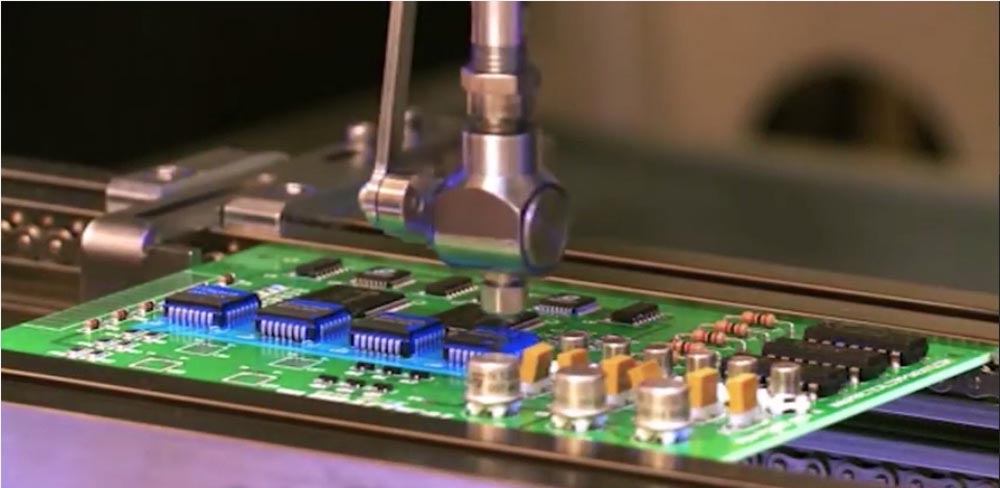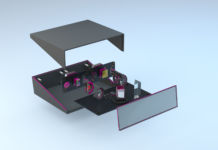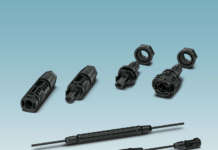In my recent blog series, I have discussed several considerations when designing a board in order to avoid production issues and more importantly to avoid potential problems with the coated board.

As we all know, nothing in life is straightforward…. In any engineering discipline, if there is the slightest chance that something might go wrong, it will go wrong; the secret is to be prepared for it. For the purposes of this blog, I’m going to concentrate on the use of Conformal Coatings for the protection of electronic assemblies, highlighting some of the potential pitfalls associated with the choice of coating and the method of application. In each case, I will suggest an approach that should mitigate the majority of problems you are likely to encounter.
The quality and performance of a Conformal Coating material could be compromised according to the method of application
This is commonly encountered when a product is transferred from one circuit manufacturer to another; for example, a product may be dip coated in one country but selectively coated in another, the specification requiring that the same material be used at both sites. The problem that arises here, however, is that using a material formulated for dip coating in selective coating equipment can result in poor yield due to excessively fast drying and bubble entrapment.
One of my customers spent six months trying to solve the bubble issue internally, without realising that the root cause of this problem lay in the material formulation. Working with the customer, it became clear that by changing the solvent blend, the bubble entrapment issue could easily be resolved. Moreover, this solution simplified the process and reduced the cycle time. And since the non-volatile formulation remained the same, there was no need to re-qualify.
Achieving incorrect coating thickness, especially with acrylics.
The IPC specification allows a dry film thickness of between 30 and 130 microns, the greater thickness being achieved by the application of multiple coating layers. Trying to achieve a 130 micron dry film thickness from a single selective-coating process with a solvent-based acrylic material is a recipe for a disaster, likely to result in excessive bubble formation, film shrinkage, coating de-lamination and additional stress on components. The result is poorer protection, rather than an improved overall level of circuit protection. Aiming for a uniform 30-50 microns and focusing on achieving perfect coverage at each application is a much better approach to improving the protection of electronic circuits.
Achieving the correct coating thickness is important; bear in mind that if the coating is too thick it can lead to entrapment of solvents in areas where the coating does not fully cure. Similarly, it can cause the coating to crack as it cures or as the result of changes in temperature, or due to mechanical shock and vibration.
Liquid conformal coatings are subject to strong capillary forces from low standoff components such as passives as well as BGA, QFP and QFN style packages.
If a conformal coating is applied to thickly or at too low a viscosity, the material can be ‘sucked’ beneath components, leading to a non-uniform fluorescence (some coatings contain a fluorescent dye, which allows 'blacklight' inspection of the PCB after coating to ensure complete and uniform coverage), as well as potential issues with package reliability. If the material takes too long to dry, the same phenomena can be seen.
Some solvent-based conformal coatings can be difficult to inspect by fluorescence when the coating thickness is 20 microns or less. The temptation is to apply more material, which can exacerbate the component reliability issue due to coefficient of thermal expansion (CTE) mismatches in the Z direction. Increasing the viscosity and the rate at which the material builds viscosity can help to improve uniformity.
While it may involve some double handling or the inclusion of an additional process, an alternative approach is to apply a thin, 'primer’ coat layer. This will improve the ability of the coating to cover sharp, vertical edges of components and reduce the likelihood of bubble entrapment and capillary force effects during the main coating layer application.
Ambient temperature and its effect on the viscosity of liquid Conformal Coatings
Some factories can have a 10-15°C temperature differential between mid-summer and mid-winter. Flow-cups are often used to control the dilution of material prior to use. Material blends with the same flow-time in winter may be very different in their make-up to the summer blend, leading to a different set of process parameters, thickness, coverage, degree of uniformity achieved and so on. The best way to overcome this problem is to ensure that temperature measurement is included along with flow-time in the viscosity monitoring process.
Using ‘off-spec’ thinners can lead to incompatibility issues with Conformal Coatings.
A recent customer experienced a problem with his conformal coating material appearance changing from clear/transparent to yellow hazy/cloudy, with a ‘wrinkly’ and 'de-wetted' finish when dried. Upon investigation it transpired that, in wishing to reduce his overall process costs, the customer had resorted to the use of ‘paint-thinner’ purchased from a local hardware store. The ‘paint’ thinner was not compatible with the conformal coating formulation, a fact that came to light initially with the formation of a cloudy solution, and which was further suggested by the appearance of pin-holes confirmed by the wrinkled finish. Indeed, within 30 minutes of mixing the solution could be seen to form two layers!
Summary
While it might be tempting to use ‘shortcuts’ either to reduce costs or to speed production, there will inevitably be a price to pay. Know the limitations and/or special properties of the materials you use to coat electronic assemblies and abide by the correct procedures.
(the article has been previously published on Electrolube's site)





